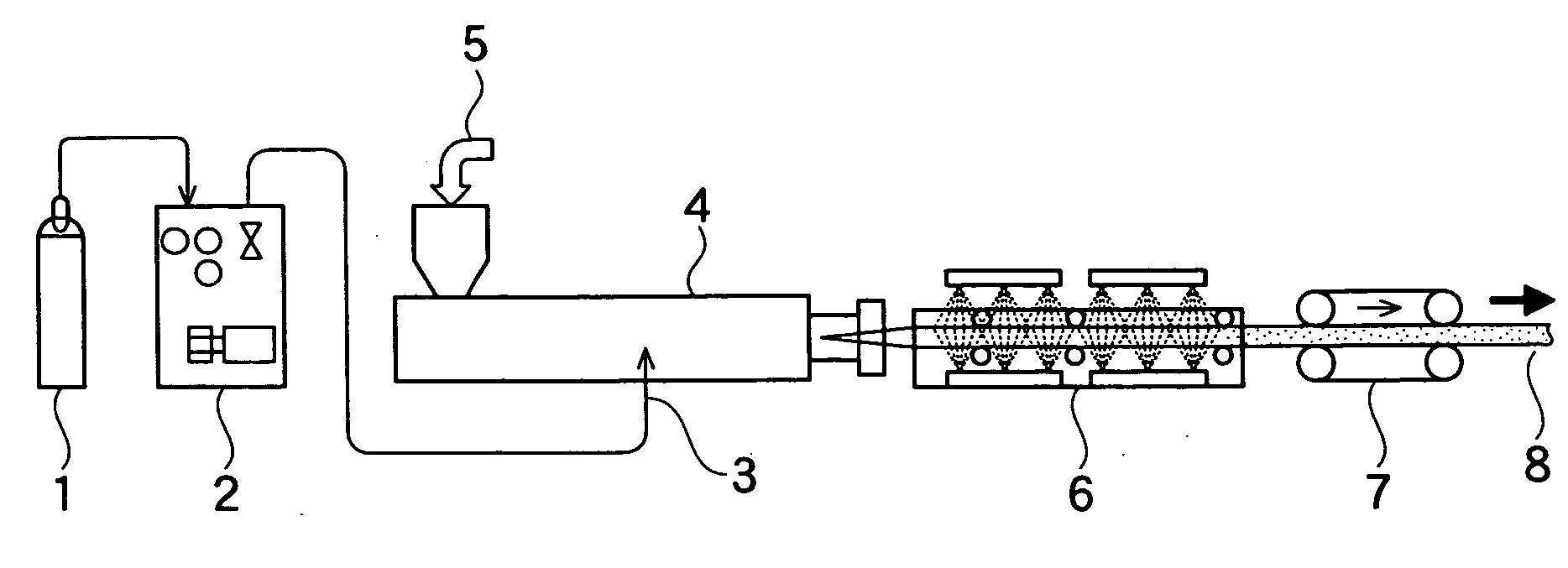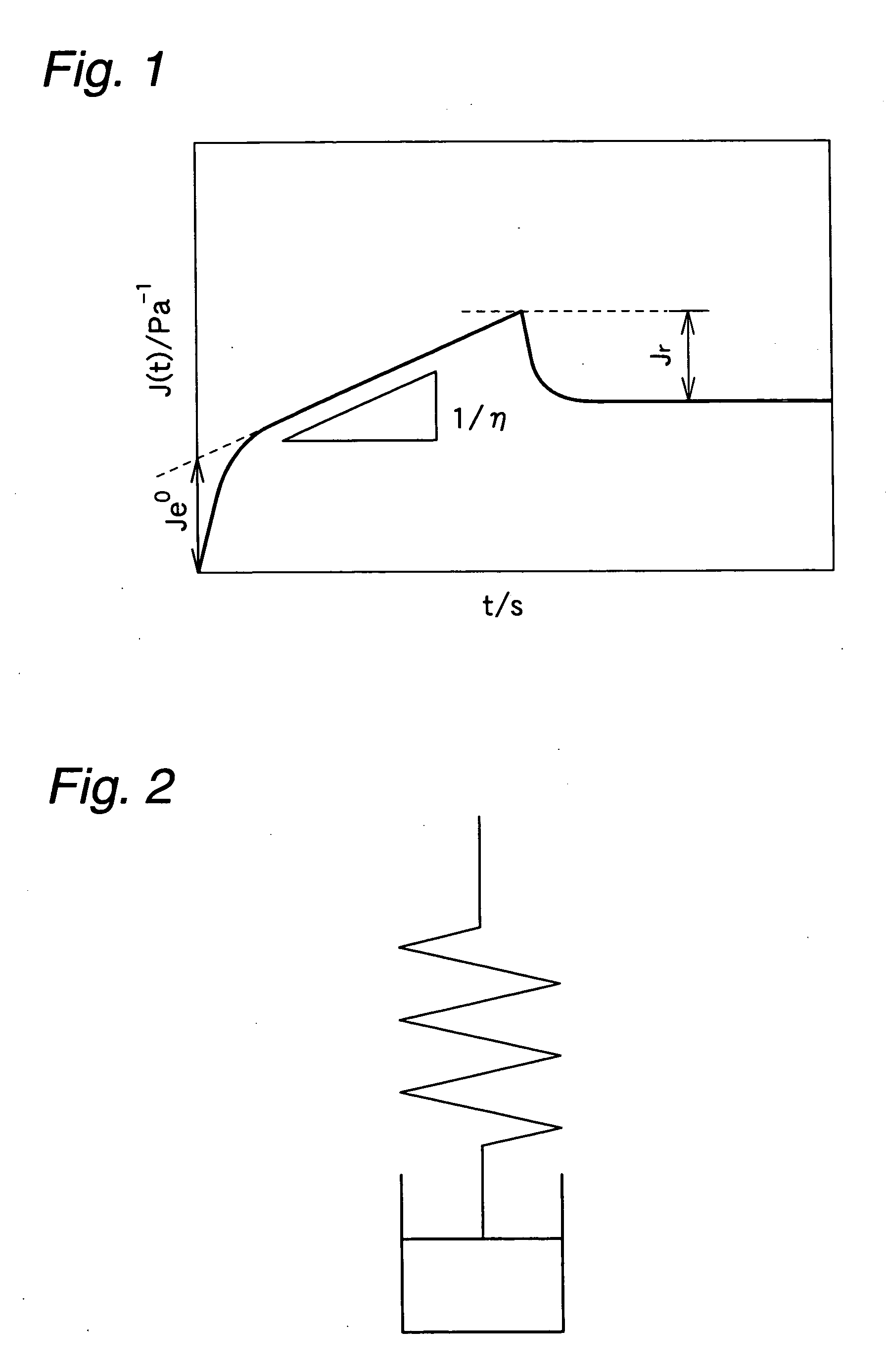Olefin-base thermoplastic elastomer foam and olefin-base thermoplastic elastomer composition for the form
- Summary
- Abstract
- Description
- Claims
- Application Information
AI Technical Summary
Benefits of technology
Problems solved by technology
Method used
Image
Examples
examples
[0171] The present invention will be explained by the following Examples, but it should be construed that the invention is in no way limited to those Examples. The foams used in the Examples were prepared and measured for properties as described below.
[0172] (Testing method)
[0173] (1) Extrusion Foaming Apparatus
example 1
[0230] 100 parts by weight of an ethylene / propylene / 5-ethylidene-2-norborn-ene copolymer rubber (hereinafter EPT-1) having an ethylene content of 63 mol %, an iodine value of 22 and an intrinsic viscosity [.eta.] of 3.2 dl / g was blended with 80 parts by weight of a mineral oil softener (Diana process oil PW-380 available from Idemitsu Kosan Co., Ltd.) to obtain an oil-extended EPT. 180 parts by weight of the resultant oil-extended EPT was mixed with 35 parts by weight of a homopolypropylene (hereinafter PP-1) having a melt flow rate of 1.5 g / 10 min (ASTM D 1238-65T, 230.degree. C., 2.16 kg load) in an internal mixer (Mixtron BB16 available from Kobe Steel, Ltd.) The mixture was shaped into a sheet through sheeting rolls and pelletized by a pelletizer (available from Horai Tekko Co., Ltd.).
[0231] 215 parts by weight of the pellets were mingled with a solution of 1.75 parts by weight of a crosslinking agent (1,3-bis(tert-butylperoxyiso-propyl)benzene) in 1.75 parts by weight of a cros...
example 2
[0236] An olefinic thermoplastic elastomer foam was obtained in the same manner as in Example 1 except that:
[0237] an ethylene / propylene / 5-ethylidene-2-norbornene copolymer rubber (hereinafter EPT-2) having an ethylene content of 68 mol %, an iodine value of 22 and an intrinsic viscosity [.eta.] of 3.9 dl / g) was used instead of the EPT-1, and
[0238] an oil-extended EPT was prepared by blending 100 parts by weight of the EPT-2 with 80 parts by weight of the mineral oil softener (Diana process oil PW-380 available from Idemitsu Kosan Co., Ltd.);
[0239] the PP-2 was replaced by a homopolypropylene (hereinafter PP-3) which contained 30% by mass of polymer components with intrinsic viscosity [.eta.] of 9 dl / g and which had a melt flow rate of 0.5 g / 10 min and a melt tension of 12 g to obtain a partially-crosslinked thermoplastic elastomer composition; and
[0240] 20 parts by weight of the mineral oil softener was not additionally added to the partially-crosslinked thermoplastic elastomer com...
PUM
| Property | Measurement | Unit |
|---|---|---|
| Fraction | aaaaa | aaaaa |
| Fraction | aaaaa | aaaaa |
| Percent by mass | aaaaa | aaaaa |
Abstract
Description
Claims
Application Information
 Login to View More
Login to View More - R&D
- Intellectual Property
- Life Sciences
- Materials
- Tech Scout
- Unparalleled Data Quality
- Higher Quality Content
- 60% Fewer Hallucinations
Browse by: Latest US Patents, China's latest patents, Technical Efficacy Thesaurus, Application Domain, Technology Topic, Popular Technical Reports.
© 2025 PatSnap. All rights reserved.Legal|Privacy policy|Modern Slavery Act Transparency Statement|Sitemap|About US| Contact US: help@patsnap.com



